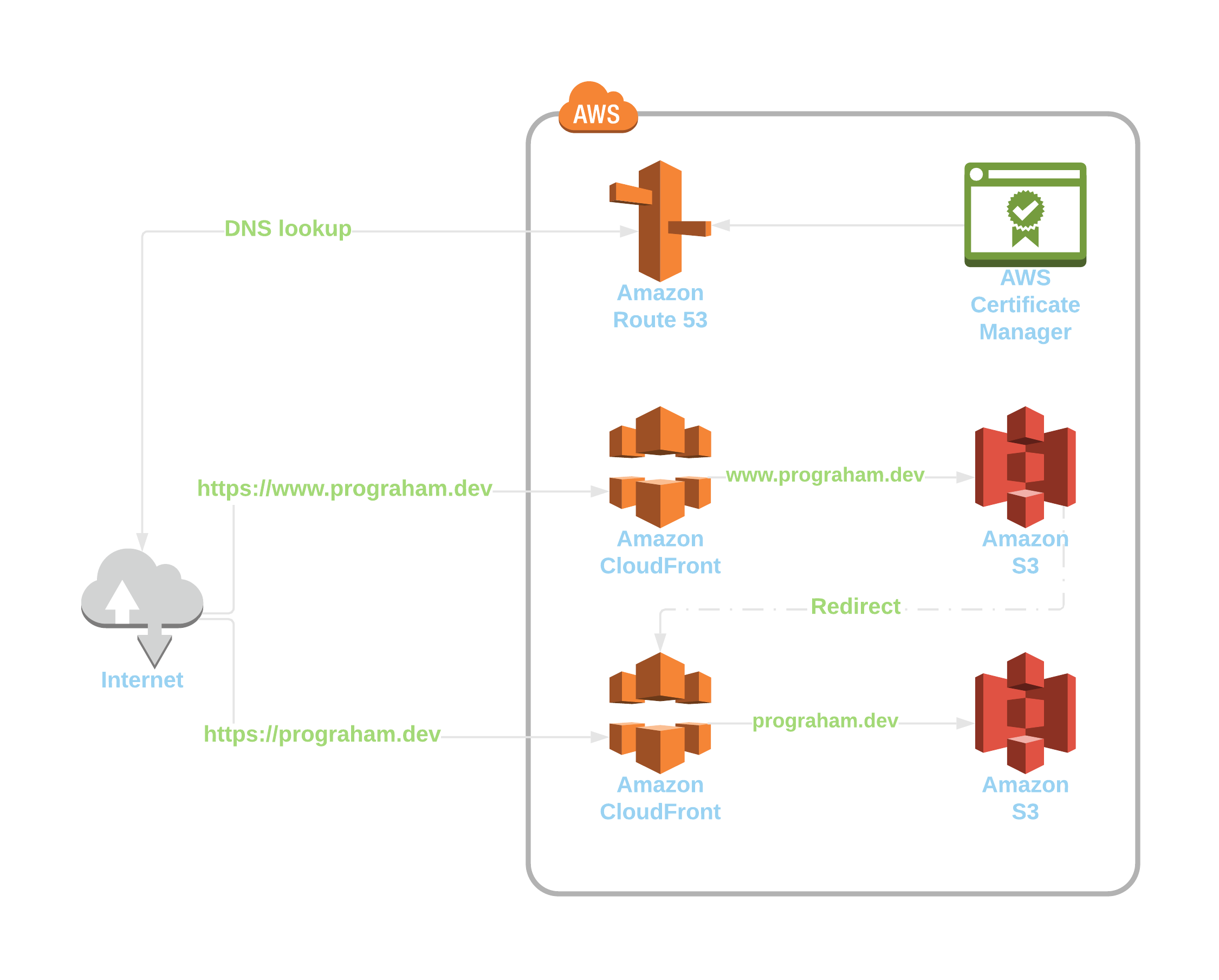This site was deployed into AWS. Partly out of convenience because I work in
AWS at my day job. Also, I wanted a little extra experience because I'm
studying for the associate level Solutions Architect certification
(my work wants me to have it).
In any case, doing things is a good way for me to learn new things, I've
realized about myself. So I have deployed this static site into AWS.
I followed this guide if you're interested in trying it out yourself: Hosting a static website on Amazon S3
Serving a static site
Infrastructure includes:
- S3
- Route53
- Cloudfront
S3
Simple storage service (S3) is AWS's object storage service. There's a lot of
selling points about the service (e.g. "11 9's of durability") that make it
seem like an over-powered medium for being the holder of a static webpage like
this.
Route53
Route53 is AWS's DNS service. I don't have much to say about it. At face value
it's just a DNS and it does that job just as well as any other one so far as I
can tell. Other than that, it's worth mentioning that it was straight-forward
adding new keys into the service when related to other infrastructure deployed
inside of AWS.
As an example, creating an A record that alias' your domain to an existing
CloudFront distribution is as simple as selecting the distribution from a
drop-down menu.
CloudFront
CloudFront is a contend delivery network (CDN). Works with Shield standard
(AWS's free DDoS mitigation service) and S3 with little to no
configuration.
How it's put together

I have some automation that publishes changes to an S3 bucket via awscli.
The bucket is configured to serve the files as a static site. Additionally,
there is a second bucket that is used as a landing point for requests to
www.prograham.dev. It doesn't make much sense to serve the static content to
both locations so I've setup a redirect to the shorter URL.
CloudFront sits in front of the bucket and distributes the site to edge
locations and enables the use of https (S3 buckets by themselves only allow
for http). Honestly, CloudFront might be a bit much for a modest site that
expects little to no real traffic. It was easy enough to configure following
documentation though and serving via https is desirable over not. The SSL
certificate is managed in AWS by the Certificate Manager.
Overall, it took a couple hours of my time - most of which was spent just groking the docs. Now, you get this wonderful little site that provides little value to you but tickles me quite a bit. You're welcome.